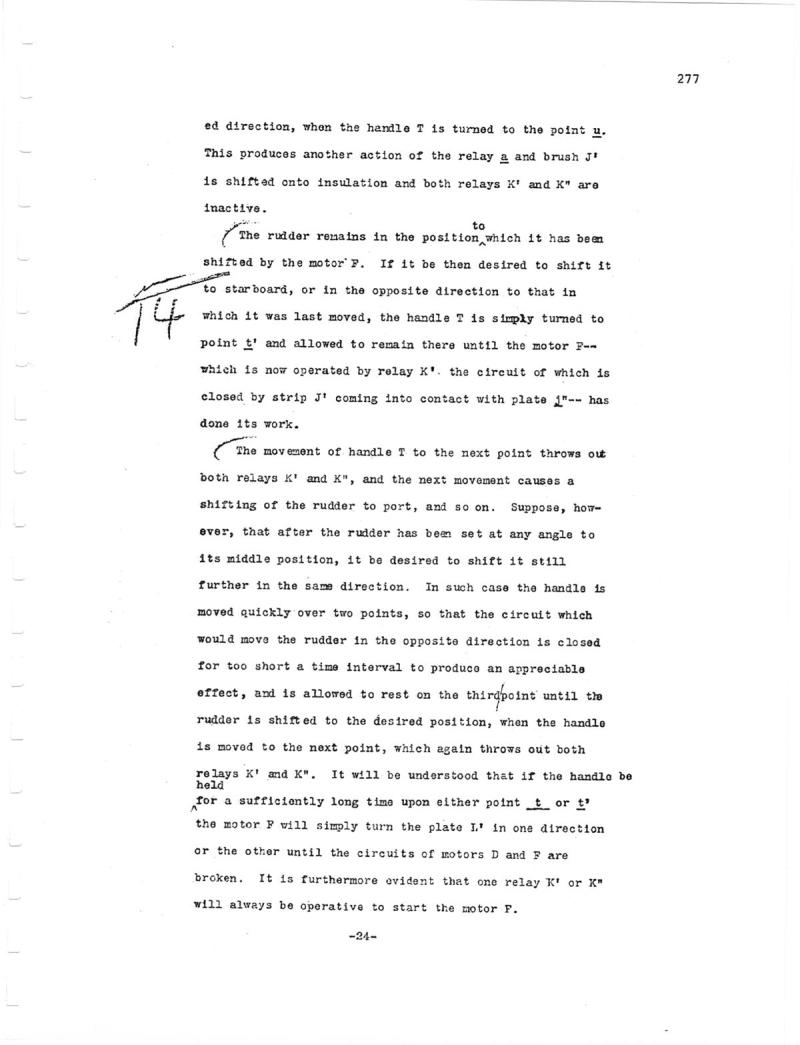
Nikola Tesla Patents
) J 74 ed direction, when the handle T is turned to the point u. This produces another action of the relay a and brush J' is shifted onto insulation and both relays K and K" are inactive. to The rudder remains in the position which it has been shifted by the motor F. If it be then desired to shift it to star board, or in the opposite direction to that in which it was last moved, the handle T is simply turned to point t' and allowed to remain there until the motor F-- which is now operated by relay K'. the circuit of which is closed by strip J¹ coming into contact with plate j"-- has done its work. The movement of handle T to the next point throws out both relays K' and K", and the next movement causes a shifting of the rudder to port, and so on. Suppose, however, that after the rudder has been set at any angle to its middle position, it be desired to shift it still further in the same direction. In such case the handle is moved quickly over two points, so that the circuit which would move the rudder in the opposite direction is closed for too short a time interval to produce an appreciable effect, and is allowed to rest on the thirdpoint until the rudder is shifted to the desired position, when the handle is moved to the next point, which again throws out both relays K' and K". It will be understood that if the handle be held for a sufficiently long time upon either point t or t' ^ the motor F will simply turn the plate I in one direction or the other until the circuits of motors D and F are broken. It is furthermore evident that one relay K' or K" will always be operative to start the motor F. -24277
